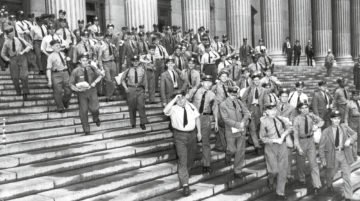Joshua Bauchner and Nancy Pope at Cabinet Magazine:
 CABINET: Let’s start with something very basic: When I send a hand-addressed letter from here in New York to a friend in Oakland, how does it get there? Why do letters go places when I put them in the mailbox?
CABINET: Let’s start with something very basic: When I send a hand-addressed letter from here in New York to a friend in Oakland, how does it get there? Why do letters go places when I put them in the mailbox?
NANCY POPE: Getting the mail from one place to another has four basic segments: acceptance, processing, transportation, and delivery. Acceptance can happen in your mailbox, in one of the on-street blue collection boxes, or at a local post office, and conveys your letter, via the local post office, to the nearest processing center; this still happens mostly by hand. The next two steps are really all a question of automation, as they have been since after the end of World War II. Processing comes down to machinery. Each of the three different types of mail—letters, packages, and flats, which include catalogues and magazines—has its own way through the system, its own machines. Your letter first goes through a culler, which separates the letters from the packages. It then enters a machine that does facing and canceling. The machine finds the stamp thanks to a phosphor in the stamp; it senses the phosphor, flips the envelope face up if necessary, cancels the stamp, and sends the letter on to a barcode machine, which will actually read the address, your handwriting.
more here.
